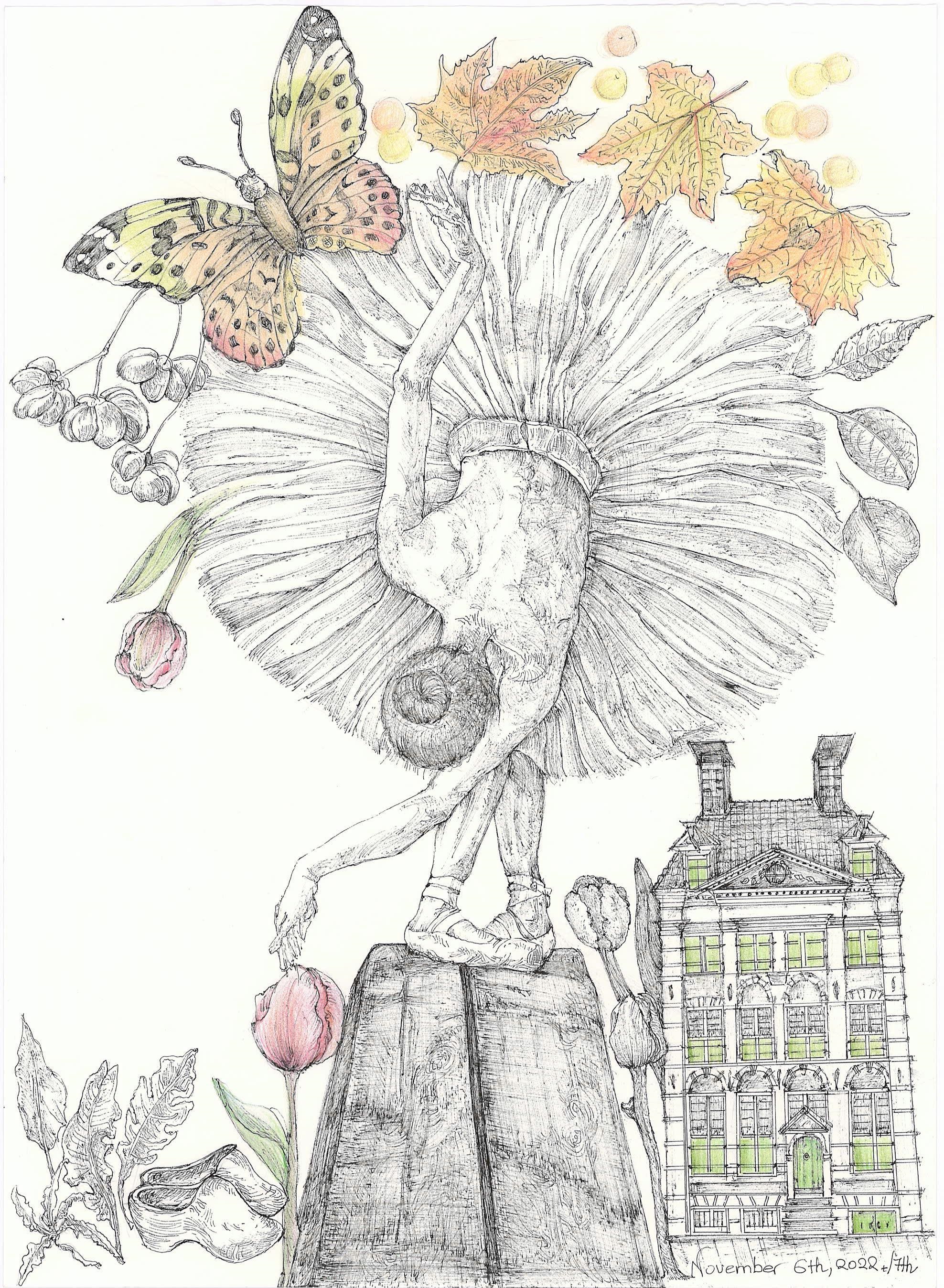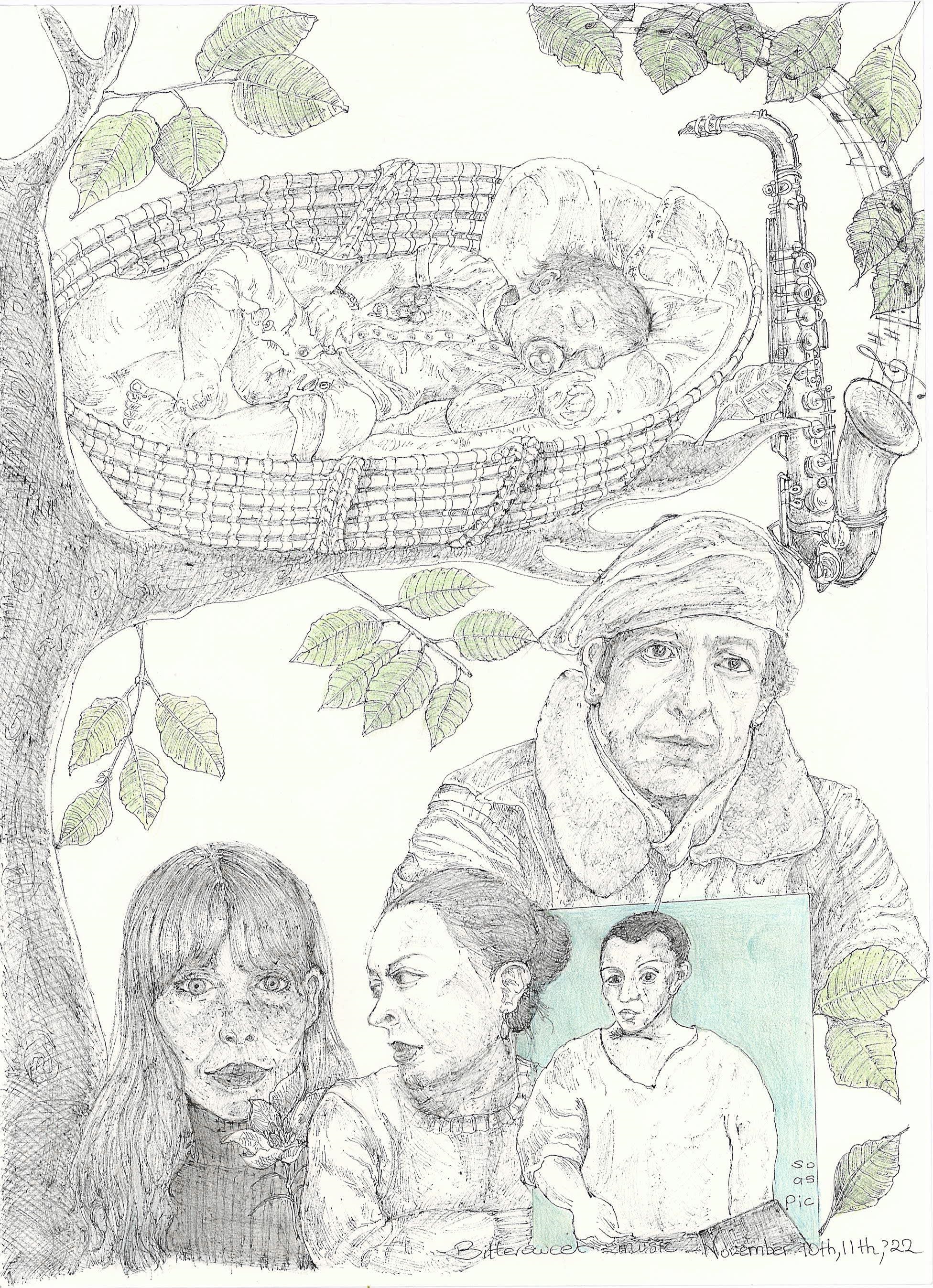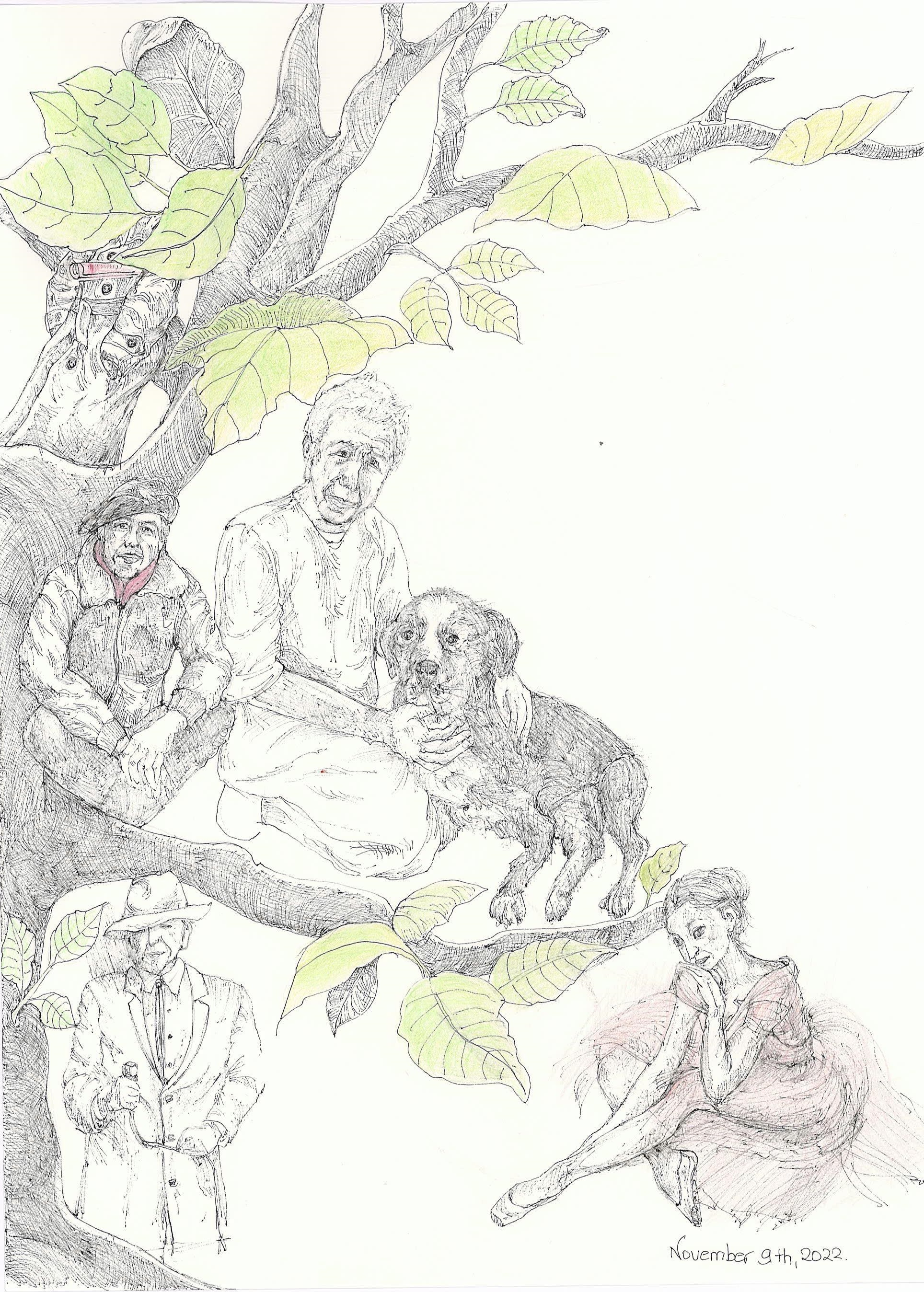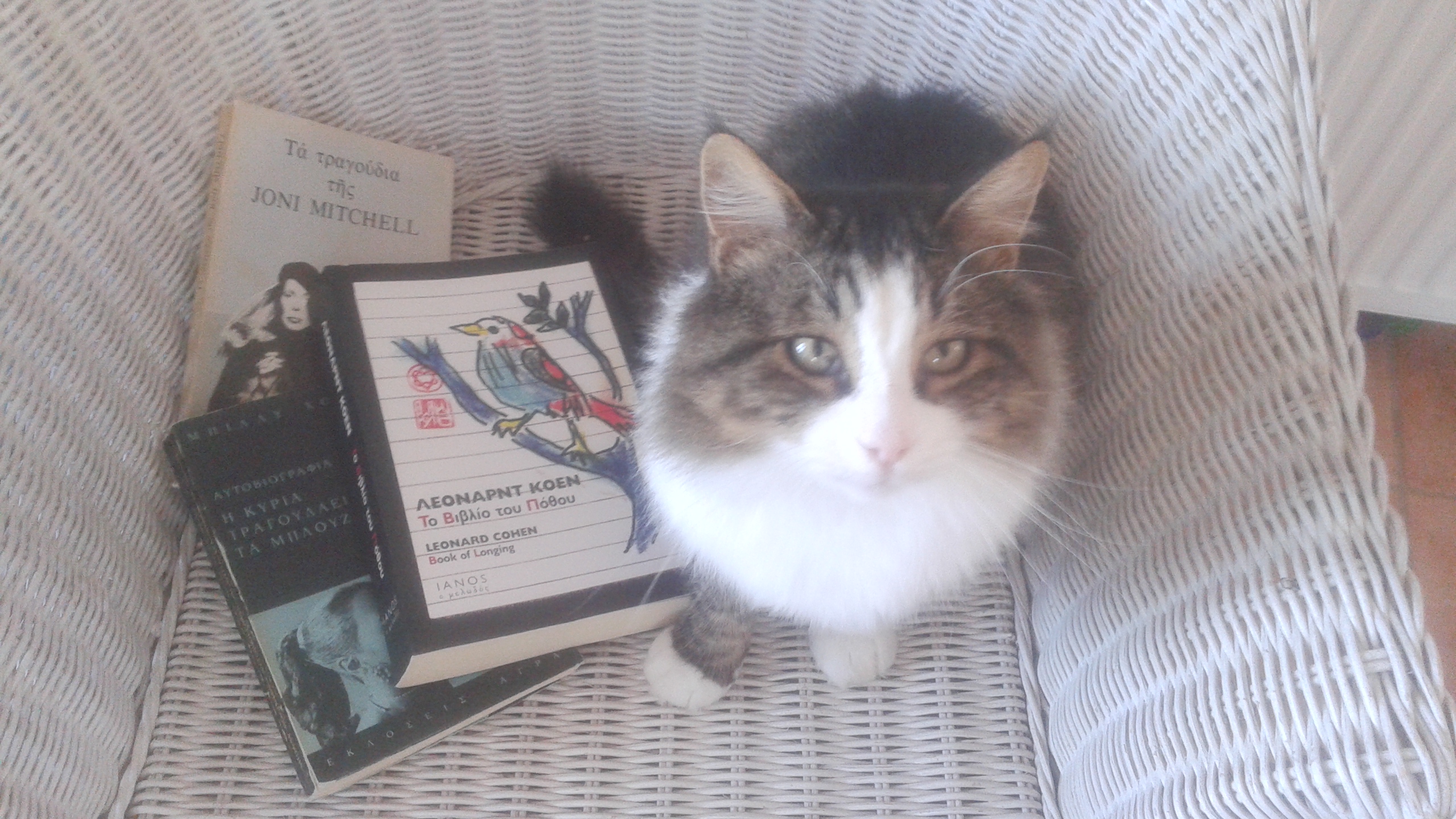Compassion, drawings and the bittersweet….
“Compassion is bittersweet: there is the bitter of the suffering and the sweet of the caring. If you get overwhelmed by the suffering, including your own, then it’s hard to sustain the caring. So try to help the sweet be larger than the bitter in your mind. You can do this by focusing on a sense of tender concern, warm-heartedness, loyalty, and support in the foreground of awareness, while having a sense of whatever is painful off to the side.” Rick Hanson
“Compassion, as both salve and salvation, is not limited to the realm of the individual. If we are to dream of a healthier, less fractured world, we will have to harness and amplify compassion’s healing power.” Gabor Maté
“The real weapons of mass destruction are the hardened hearts of humanity” Leonard Cohen
“Ring the bells that still can ring. Forget your perfect offering. There is a crack in everything. That’s how the light gets in.” Leonard Cohen
“You’ve got to keep the child alive; you can’t create without it.” Joni Mitchell
Today I’m posting more artwork. Musicians like Joni Mitchell, Leonard Cohen and others, whose bittersweet music and poetry have captivated me at times, are part of these drawings. Today’s post is also about compassion.



One of Cohen’s songs is titled The Days of Kindness and it is about his life on Hydra, a tiny Greek island [https://www.youtube.com/watch?v=GxyEN9ddQyw]
Greece is a good place / to look at the moon, isn’t it
You can read by moonlight / You can read on the terrace
You can see a face / as you saw it when you were young
There was good light then / oil lamps and candles / and those little flames /that floated on a cork in olive oil
What I loved in my old life / I haven’t forgotten It lives in my spine
Marianne and the child / The days of kindness
It rises in my spine / and it manifests as tears
I pray that loving memory / exists for them too
the precious ones I overthrew / for an education in the world
The Circle Game, lyrics by Joni Mitchell about time…
Yesterday a child came out to wander
Caught a dragonfly inside a jar
Fearful when the sky was full of thunder
And tearful at the falling of a star
And the seasons, they go round and round
And the painted ponies go up and down
We’re captive on the carousel of time
We can’t return, we can only look
Behind, from where we came And go round and round and round, in the circle game
Then the child moved ten times round the seasons
Skated over ten clear frozen streams
Words like, “When you’re older” must appease him
And promises of someday make his dreams…..

As I mentioned today’s post is also about compassion.
The Oxford dictionary defines compassion as a strong feeling of sympathy for people who are suffering and a desire to help them. So, compassion is more than the ability to understand another person’s feelings or experience, because it also includes the desire to alleviate their suffering. Rick Hanson suggests that “Compassion involves sensitivity to suffering, a caring response, and a desire to help if one can.”
I will begin with some ideas from Dr Gabor |Mate’s book, The Myth of Normal, which I’m still reading. As I’ve said I’ve recently been drawing with an urgency of sorts, which means drawing has been taking up a lot of time, and that means that I’m making very slow progress through the several books that I’ve started with the intention to finish.
Anyway, Mate distinguishes five kinds of compassion. He begins with what he terms as Ordinary Human Compassion, which refers to our ability to be with and feel another’s pain. Mate claims that whether or not we experience another’s pain vividly, entry-level compassion requires we have the ability to be with another person’s suffering, to be able to register and be moved by their pain. He writes: “Interpersonal compassion necessarily involves empathy, the ability to get and relate to the feelings of another.” He also distinguishes compassion from pity, because pity involves looking down on another’s misfortune from some imagined higher status and sense of worth. He adds that “even if there is an actual power gap between us in the world— say, one born of a racial or economic hierarchy— treating it as if it is a permanent, essential fact about us does neither one of us any favors.”
Then he discusses what he calls Compassion of Curiosity and Understanding, which he writes could also be called the compassion of context. This requires us to ask why any person or group of people would, for instance, live or suffer the way they do or end up being the way they are and acting the way they do. Trying to understand the deeper causes of people’s conditions and predicaments assists us in acting compassionately and in appropriate ways. Mate writes: “In today’s society we often default to easy explanations, quick judgments, and knee-jerk solutions. Questing with clear eyes to find the systemic roots of why things are the way they are takes patience, curiosity, and fortitude.”
The third compassion is called The Compassion of Recognition, which allows us to understand that that “we are all in the same boat, roiled by similar tribulations and contradictions.” This aspect of compassion is about recognising our commonality as human beings and our connecting with our humanity.
The fourth is termed Compassion of Truth. Here Mate explores the value of truth and of being honest. He does however clarify that truth and compassion have to be reciprocal partners. We are not being compassionate by simply dumping difficult truths on others. He believes that there is nothing compassionate about “shielding people from the inevitable hurts, disappointments, and setbacks life doles out to all of us, from childhood onward”, because this is not only futile, but might prove harmful in the long run. Shielding others from the truth may be nothing more than a reflection of our own discomfort with our own wounds. In order for people to grow and heal their traumas there needs to be some reckoning with their traumas in safe contexts. Healing cannot occur without painful material surfacing and without our moving through the pain. Mate suggests that pain is inherently compassionate, as it alerts us to what is amiss. He writes “we all go into denial, suppression, repression, rationalization, justification, hazy memory, and varying grades of dissociation in the presence of hurt. …. Healing, in a sense, is about unlearning the notion that we need to protect ourselves from our own pain. In this way, compassion is a gateway to another essential quality: courage.”
And finally, the fifth compassion is The Compassion of Possibility, which refers to the fact that we are all more than our conditioned personalities that we present to the world, the unprocessed emotions we act out or project on others or the maladaptive at times behaviours we engage in. Mate writes “Staying open to possibility doesn’t require instant results. It means knowing that there is more to all of us, in the most positive sense, than meets the eye.”
“We are born to be good to each other.” Dacher Keltner
In his article The Compassionate Species at:https://greatergood.berkeley.edu/article/item/the_compassionate_species, Dacher Keltner, PhD, argues that the fact, that our babies are the most vulnerable offspring on Earth rearranged our social structures, building cooperative networks of caretaking, and it rearranged our nervous systems. Thus, we evolved into the super care-giving species, to the point where acts of care improve our physical health and lengthen our lives.
Keltner explains the neuroscience behind these experiences. For instance, when we feel pain the anterior cingulate region of our brain will light up. But interestingly, that very same part of the cortex is activated when we witness other people’s pain. He writes “We are wired to empathize, if you will.” He also refers to a very old region of the mammalian nervous system called the periaqueductal gray, way down in the center of the brain, that lights up, which in mammals is associated with nurturing behavior. He concludes: “We don’t just see suffering as a threat. We also instinctively want to alleviate that suffering through nurturance.”
He goes on to explain how the vagus nerve, which is a part of our autonomic nervous system that starts at the top of the spinal cord and wanders through our body, through muscles in the neck that help us nod our head, orient our gaze toward other people and vocalize, is also activated when we witness the suffering of others. The vagus nerve moves down and helps coordinate the interaction between our breathing and your heart rate, moves into the spleen and liver, where it controls a lot of digestive processes. Keltner writes: “Recent studies suggest the vagus nerve is related to a stronger immune system response and regulates our inflammation response to disease and helps us calm down every time we take a deep breath.
Keltner notes that their research supports that there are people who have really strong vagus nerves—“vagal superstars,” as he likes to call them. He also talks about the data that suggest humans are wired to care, down to the neurochemical level (see research around oxytocin). He refers to Nikos Christakis’ work, which I’ve written about in an older post and other research findings. He ends the article with the following: “So forget what you’ve been told about compassion—that it’s unnatural, that it’s for suckers. Compassion is essential to our evolutionary history, it defines who we are as a species, and it serves our greatest needs as individuals—to survive, to connect, and to find our mates in life.”
Finally, I’d like to share some practices related to compassion for the self and others by Dr Rick Hanson and Dr Kristin Neff:
A collection of 3 meditations from Rick Hanson, Founder of the Global Compassion Coalition at: https://vimeo.com/showcase/9953907
A compassionate body scan by Kristin Neff, whose work centres around self compassion, for deepening our sense of self-compassion and body awareness at: https://www.youtube.com/watch?v=FOm6dhob_tw
